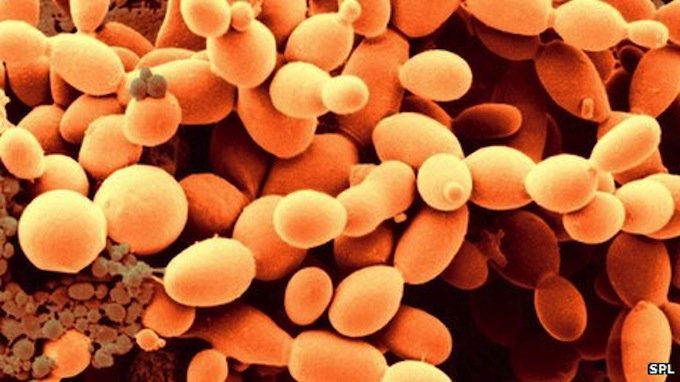An evolutionary analysis in fungi identifies biological mechanisms conserved for hundreds of millions of years
An evolutionary analysis in fungi identifies biological mechanisms conserved for hundreds of millions of years
An evolutionary analysis in fungi identifies biological mechanisms conserved for hundreds of millions of years

Researchers of the EMBL (Cambridge and Heidelberg) and the University of Washington have presented an evolutionary analysis of the phosphorylation of the proteins of 18 fungal species which indicates rapid divergence, with only a small fraction conserved for hundreds of millions of years. The work, led by Pedro Beltrao and Judit Villén, includes the participation of the Cell Signaling research group of Pompeu Fabra University, led by Eulàlia de Nadal and Francesc Posas. It is to be published on 14 October in the journal Science.
Proteins are essential for life and most of the processes that take place in cells are carried out by these molecules. In order to signal and regulate the functions of their proteins, organisms have developed a fast, versatile mechanism: the modification or marking of proteins by phosphorylation. A mechanism that, like all biological processes, has evolved over hundreds of millions of years.
The researchers have analysed the phosphorylation of all the proteins of 18 different fungal species in order to ascertain the differences and similarities between them and find out more about their evolutionary conservation. This analysis has found that there is a rapid divergence in the protein markers, with only a small fraction conserved throughout evolution.
“Today, when genome analysis has become so important, we cannot forget that it is not enough to know which proteins are present in a cell but also how they are regulated”, comment doctors de Nadal and Posas. “This study provides data in this regard. Highly conserved regulatory markers have been discovered and this teaches us how we can regulate these proteins, at the same time we have seen how quickly possible regulatory mechanisms evolve over the course of evolution in order to enhance adaptation”.
With the exception of well conserved markers, the results of the study show that throughout evolution the phosphorylation of proteins has been very dynamic, probably in order to contribute to diversity among species and have more tools to adapt to changes. The markers that have not changed over time indicate the relevance of their function. The identification of such ancient markers will allow functional studies to be made of them, and enable discovering their importance and defining new functions conserved in evolution.
“Bearing in mind that the fungi analysed are very distant from an evolutionary point of view, we believe that the divergence observed in the network of modifications will also be the case in other organisms”, the UPF researchers add. “In fact, this divergence could be related to the specific environmental niche of each species suggesting that it is a very dynamic process and is partly responsible for the diversity that we find when we compare different organisms”.


Upper image: S. cerevisae, source: BBC News
Lower images: Eulàlia de Nadal and Francesc Posas
Reference work: Studer RA, Rodriguez-Mias RA, Haas KM, Hsu JI, Viéitez C, Solé C, Swaney DL, Stanford LB, Liachko I, Böttcher R, Dunham MJ, de Nadal E, Posas F, Beltrao P* and Villén J*. Evolution of protein phosphorylation across 18 fungal species. Science. In press (2016).
